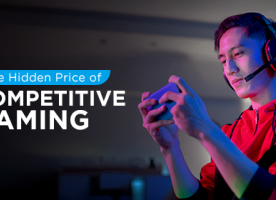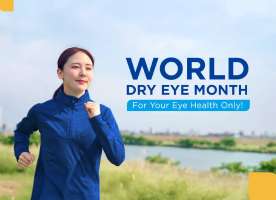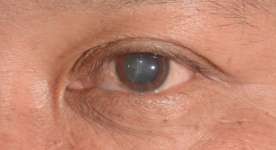Don't Forget About Dry Eye Disease In Children!
Dry eye disease is underdiagnosed and undertreated in children. Just as in adults, dry eye in children can cause discomfort and even affect vision in severe cases.
Prevalence
The TFOS DEWS II(Tear Film & Ocular Surface Society Dry Eye Workshop II) Epidemiology Report showed that, after the fourth decade of life, the prevalence of dry eye linearly increases. Interestingly, the few data on children included in the analysis showed, in the age range of 15 to 18 years, the lowest prevalence of clinically diagnosed dry eye but an anomalous high prevalence of dry eye symptoms.

Causes
- Frequent and prolonged use of electronic devices like smartphone, laptops, tables and game consoles reduces the blink rate and induces evaporative dry eye disease. Unfortunately, this is a growing trend.
- Meibomian gland dysfunction (MGD) is more common than is realized. It can affect the composition of the tear film and cause dry eye. Meibomian glands are tiny oil glands in the eyelids. MGD occurs as meibomian gland secretions thicken and become clogged due to inflammation, obstruction, and/or gland atrophy. The patient presents with blepharitis with irritated, itchy eyelids with reddened lid margins
- Ocular allergies (allergic eye disease), decrease tear film stability, impair both meibomian gland function and tear mucin secretion, induce ocular surface inflammation and affect corneal innervation.
- Systemic diseases: Autoimmune diseases such as Sjogren syndrome (SS), juvenile idiopathic arthritis (JIA) and rare congenital conditions which affect lacrimal glands and corneal nerve function:
- Dietary vitamin A deficiency
- Several drugs which induce or exacerbate dry eye disease, include systemic and topical retinoids for acne vulgaris, systemic and topical anti-allergic drugs, and benzalkonium chloride-preserved eyedrops.
- Contact lens use
Presentation
Depending on the age of the child, he/she may not be able to express the discomfort. It is essential for parents to watch out for the following signs:
 Frequent blinking
Frequent blinking Constant eye dubbing
Constant eye dubbing Eye redness
Eye redness Gritty or sandy feeling in the eye
Gritty or sandy feeling in the eye
 Itchy eyes
Itchy eyes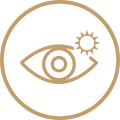 Light sensitivity
Light sensitivity Blurring of vision
Blurring of vision
Diagnosing Dry Eye In Children
On reason for the under diagnosis of dry eye is that children can be so challenging to examine. Parents should bring their children to see an eye doctor as timely treatment is important.
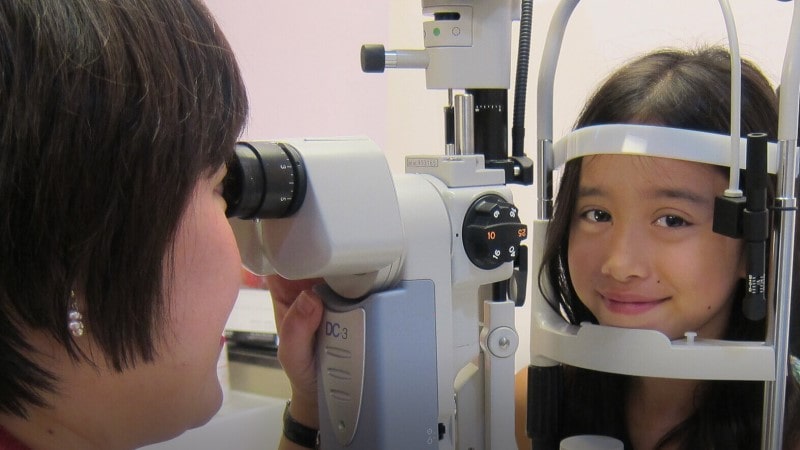
Treatment
- Treat underlying disease and change medication which is causing dry eye
- Environmental and lifestyle changes. These include decreasing screen time and taking periodic eye breaks. Sunglasses with side shields can be used to reduce symptoms in windy or dry conditions. Limit exposure to second-hand smoke
- Education regarding potential dietary modification; increase Omega-3 fatty acids (supplements or from oily fish like salmon, sardine, tuna, trout, anchovy) and flaxseed
- Blepharitis treatment with lid hygiene, warm compress. Demodex treatment with tea tree oil
- Tear supplementation, lubrication
- Prescription dry eye medications include topical corticosteroids, topical secretagogue, topical cyclosporine, oral macrolide antibiotics.
- Most severe cases require additional therapies
Dr Leo Seo Wei
Senior Consultan Ophthalmologist, DrLeo Adult & Paediatric Eye Specialist Pte Ltd
#10-04 Mount Elizabeth Medical Centre, 3 Mount Elizabeth, Singapore 228510

